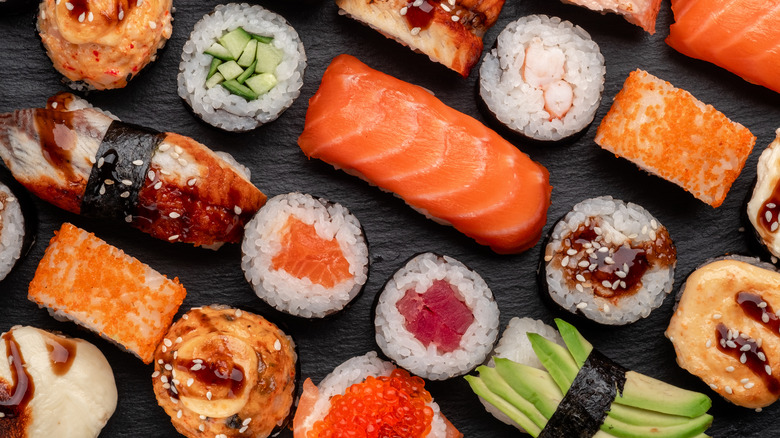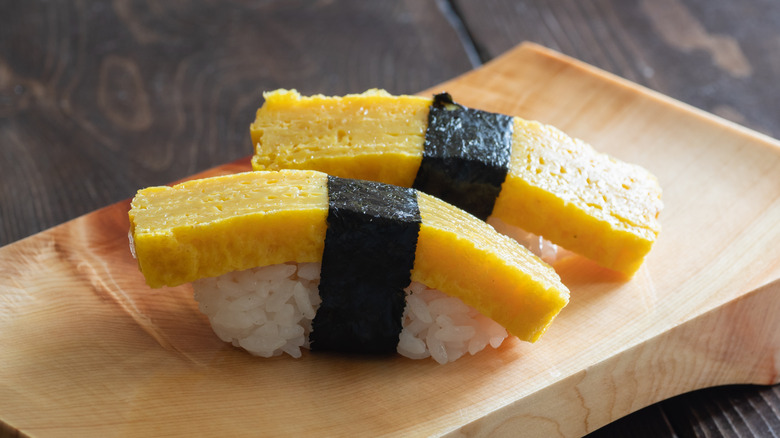The Sushi Rolls You Should Always Save For The End Of The Meal
Unless you're dining omakase-style, you probably haven't thought much about the order in which you eat sushi rolls. However, the sequence can make a huge difference in your dining experience. Consequently, while there are suitable rolls to kick off the feast, there are also specific rolls that are best reserved for the end of the meal.
Generally, sushi is best served in a way where flavor intensities gradually increase so as to not confuse or overwhelm the palate. That means it's best to start with more delicate offerings, such as white fish like mackerel or flounder that are seasoned sparingly, before indulging in richer varieties of fish like tuna or sea urchin or more heavily sauced nigiri. After all this decadence, fresh maki rolls might even make an appearance before things draw to a close.
Just as you would end any dinner on a sweeter note, when it comes to sushi, nothing changes. That's why the subtly sweet and melt-in-your-mouth anago (eel) is best saved as one of the last bites before a finale of custard-like tamagoyaki (rolled omelet). Sure to satisfy your sweet tooth and put a pleasant end to the sushi-eating experience, saving saccharine sushi rolls for last means that sugar won't coat the palate and dull other tastes, something that's key when making the most out of your sushi-eating experience.
Moving from savory to sweet, always respect your palate
While ending with sweeter rolls relies entirely on personal preference, many itamae and sushi connoisseurs recognize that bold tastes (sweet or otherwise) can desensitize taste buds and lead to an improper (or unfair) tasting of more delicately flavored sushi and its nuanced complexities. Given that bigger and bolder flavors are obvious and noticed almost immediately, this is also why typical sushi sides — soy sauce, wasabi, and ginger — should be enjoyed sparingly.
When it comes to soy sauce, not only will a full plunge into soy sauce lead to the demise of your sushi roll, but it will also impact the flavor and overpower the fish and your palate, even if you're eating "in order," so to speak. As a result, this is why many recommend just briefly dipping a portion of the fish side rather than an entire piece into soy sauce. Likewise, dunking an already sauced piece of sushi into soy is another surefire way to make a mess of your palate and cloud flavor.
As for zippy dots of wasabi and palate-cleansing ginger, these pungent accompaniments are also best consumed in moderation since sushi is really all about embracing simplicity and quality in a balanced way. Rather than detract from its delicacy, take the time to fully taste sushi, and you'll understand quickly why eating in a way that builds on intensity just makes sense.

